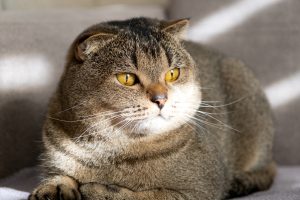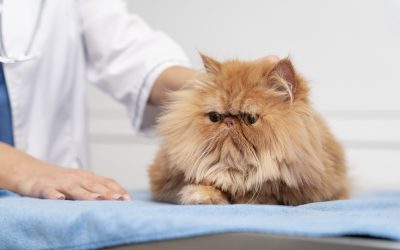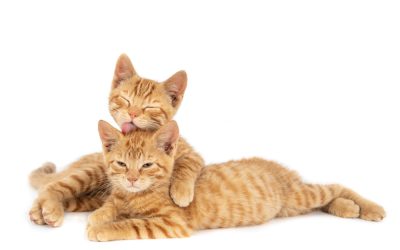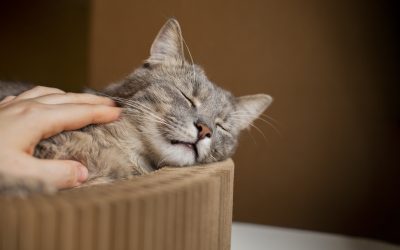Obesity in Cats: Causes and Treatment
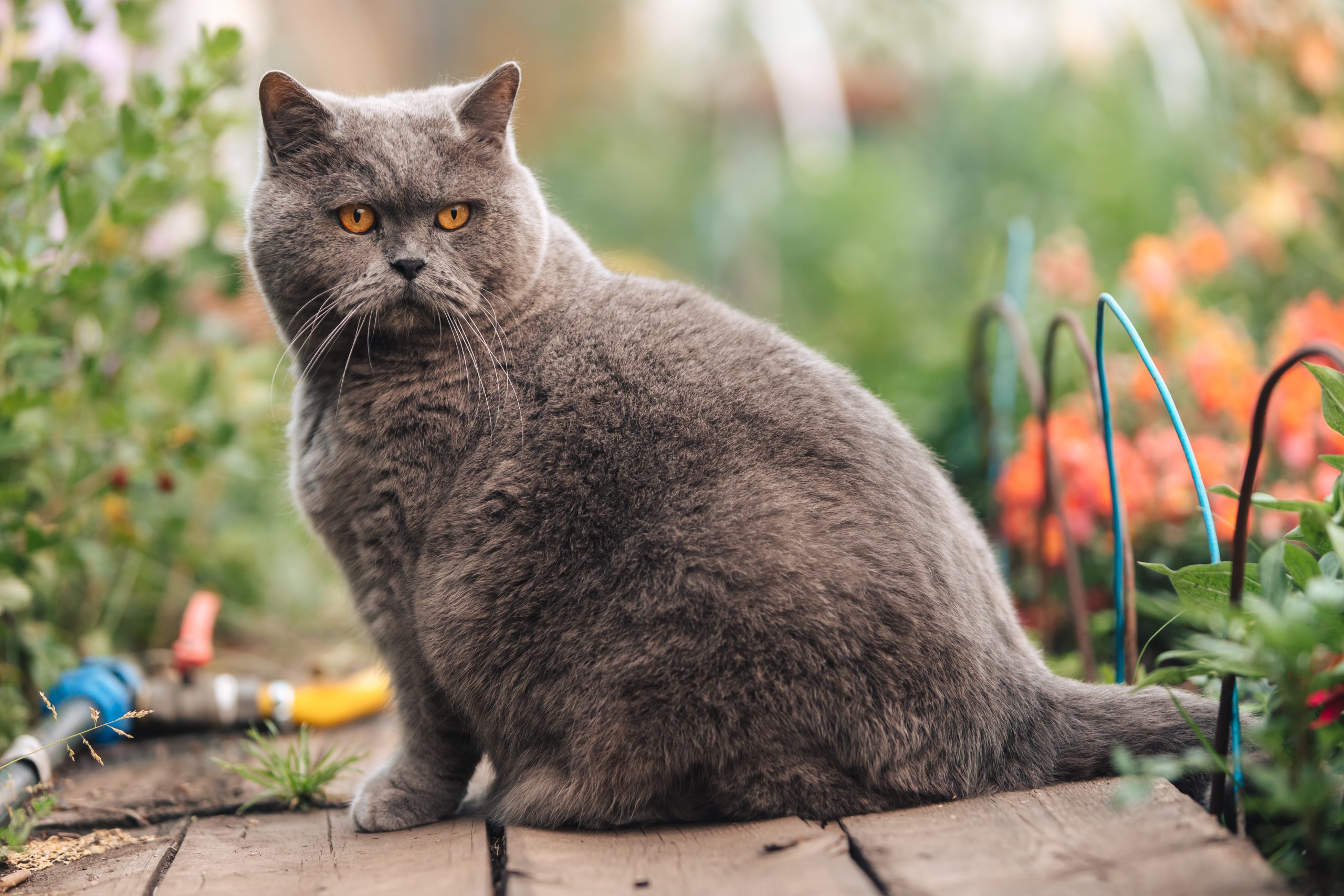
Feline obesity occurs when a cat accumulates excessive body fat. It’s more than just being a bit chubby—extra weight can seriously impact your cat’s health, comfort, and even how long they live. Generally, if a cat weighs 20% or more above their ideal body weight, they’re considered obese. Unfortunately, this is becoming more common, with over half of cats in developed countries now overweight or obese.
The good news? By learning about feline obesity, including its causes, associated health problems, and how to identify it, you’ll be better equipped to help your cat stay healthy and happy.
Why Do Cats Become Overweight?
Just like people, certain factors can make some cats more likely to put on extra pounds. Here are a few of the most common reasons:
Age: Middle-aged cats, typically between 8 and 12 years old, often slow down and become less active, which can lead to weight gain. Younger cats tend to be more playful, while elderly cats may lose weight due to age-related issues.
Neutering: Neutered cats—both males and females—often have a heartier appetite. After being spayed or neutered, a cat’s metabolism can slow down, which means they need fewer calories than before.
Lifestyle: Indoor cats or those with limited outdoor access simply don’t get as many opportunities to climb, chase, and explore. Without enough play and exercise, it’s easier for them to pack on extra pounds.
Health issues: Certain medical problems can also contribute. For example, food allergies might make finding the right diet tricky. Arthritis and joint pain can make moving around uncomfortable, causing your cat to be less active and burn fewer calories.
As a veterinarian, Amanda Ardente, DVM, PhD stated in the PetMD article:
- “Type of diet: Feeding a diet of mostly dry food tends to promote weight gain in cats more so than a diet solely or primarily consisting of canned food.
- Inaccurate food measurement: It is important to be consistent with food, and to use a scoop with a known measure (e.g., a ¼-cup measuring cup vs. a plastic cup) and feed out of a bowl size that is appropriate for measured food offered. Without these tools, the risk of over feeding a cat is more likely.
- Rapid food consumption: If your pet eats too quickly, this can lead to boredom, crying and begging, which results in feeding your cat more food off schedule to keep him entertained and quiet.
- Indulgent feeding practices: Feeding one or two large meals in the day may increase risk of obesity and begging in your cat compared to using free choice feeding or feeding small, frequent meals.
- Excessive treats: Treats tend to be higher in fat and calories than a cat’s regular diet, so offering too many treats throughout the day quickly increases the total calories offered and can create a nutritionally unbalanced diet.”
Why a Few Extra Pounds Matter
Carrying extra weight can lead to serious health issues. Obese cats are much more likely to develop diabetes, arthritis from extra stress on their joints, and even heart disease.
Extra fat can also make it harder for your cat to breathe or move around comfortably. In some cases, obesity can trigger a dangerous liver condition called hepatic lipidosis, which needs urgent medical care. Keeping your cat at a healthy weight helps them live a longer, more comfortable life.
How to Tell if Your Cat is Overweight
Sometimes it’s hard to notice your cat gaining weight, especially if it happens slowly. But there are some simple signs to watch for. When you look down at your cat from above, you should see a waistline that curves in a bit. From the side, there should be a slight tummy tuck rather than a hanging belly.
Also, notice how your cat acts. Are they less playful or more tired than usual? Struggling to groom themselves? These can be clues that they’re carrying too much weight.
Here are some other signs to watch for:
- Trouble jumping onto furniture or climbing stairs
- Spending more time lying around and being reluctant to get up and move
- Losing that graceful waistline, your cat may look more like a rectangle from above
- You can’t easily feel their ribs or hip bones anymore
- Their back appears flat when you look down at them
- Their fur may become messy or greasy because they’re less able to groom hard-to-reach spots
- You might notice their collar feels tighter than before
- Less frequent pooping or more gassy than usual
Tips for Helping Your Cat Lose Weight
Helping your cat lose weight is about small, steady changes. Start by adjusting their diet. Make sure they’re eating high-quality food in the right portions. You should consult with your veterinarian to determine the type of food and the quantity.
Choose Calorie-Controlled Foods
Veterinarians often recommend specially formulated, calorie-controlled foods that encourage weight loss without sacrificing muscle mass. Diets that are lower in carbohydrates and fat but higher in protein and insoluble fiber can help your cat feel full and satisfied while still cutting back on extra calories.
Consider Switching to Canned Food
In some cases, your vet may suggest moving from a dry diet to a canned one. Canned food can make it easier to meet specific nutrient goals. Just be sure not to leave moist food out for more than 2–4 hours at room temperature, since it can spoil quickly. Wash your cat’s dishes with warm, soapy water between feedings to keep them safe from bacteria.
Ask About Prescription Veterinary Diets
For cats needing extra support, prescription “metabolic-control” diets may be recommended. These diets are designed to help the body burn fat for energy rather than relying mainly on carbohydrates. Unlike traditional weight-loss approaches that focus only on cutting calories, these diets can help trigger a natural fat-burning process called ketosis.
Why Good Nutrition Matters
Cats are obligate carnivores, which means their bodies need nutrients found in animal protein to thrive. Choosing a balanced, high-quality cat food helps maintain muscle, keeps their coat shiny, and supports a healthy weight.
Pay attention to feeding guidelines on the packaging, but remember these are just starting points. Your cat’s needs may vary depending on their age, activity level, and overall health. When in doubt, your vet can help you fine-tune their diet.
Make Playtime Part of Every Day
Exercise is essential for keeping your cat at a healthy weight—and it can be a lot of fun for both of you. Interactive toys like feather wands or laser pointers encourage your cat’s natural hunting instincts. Cat trees and shelves give them places to climb and explore, which burns calories and keeps them engaged.
Try to set aside at least 15-20 minutes a couple of times a day for play. Mixing up toys and activities keeps things interesting and motivates your cat to move.
Can Odie Pet Insurance Provide Coverage for the Treatment of Your Cat?
Depending on the specific policy, pet insurance can cover the diagnosis, treatment, and management of diseases in cats.
Reimbursement
This method is the most common for pet insurance companies. You pay out of pocket for the veterinarian bill, and then the insurance company reimburses you for what’s covered under the insurance plan. The steps look like this.
- You pay the vet bill after your cat’s visit.
- You fill out the pet insurance claim form.
- Submit the claim form and other required documentation to the insurer.
- After the claim is approved, you will be reimbursed for eligible expenses.
Odie’s Illness and Injury pet health insurance plan offers comprehensive coverage for your cat.
What Does Odie Pet Insurance Cover?
Pet insurance covers various veterinary expenses, providing financial protection and peace of mind for pet owners. Here are the details of the coverage options offered by Odie Pet Insurance:
Illness & Injury Plan
The Illness & Injury Plan is an all-inclusive insurance plan designed to cover a wide range of medical needs for your pet. This plan includes comprehensive coverage for various illnesses, injuries, and veterinary services. Some of the covered items include:
- Veterinary exams and consultations
- Diagnostics (e.g., X-rays, lab tests)
- Prescribed medications
- Surgeries and hospitalization
- Rehabilitation, acupuncture, or chiropractic treatments
- Medically necessary supplies
- Euthanasia and cremation
The Wellness Plan
The Wellness Plan is a monthly membership that focuses on preventive care and covers routine veterinary services.
- Provides reimbursements for routine care items such as wellness visits (exams and vaccines), testing and parasite prevention, dental cleanings and at-home dental care, vitamins, supplements, and more.
- Through Odie’s partnership with Petivity, a leader in smart pet products and proactive care, Wellness Plan members can also receive reimbursements for Petivity devices and health kits, as well as eligible Purina food and supplements.
- Total reimbursement up to $700 per year.

